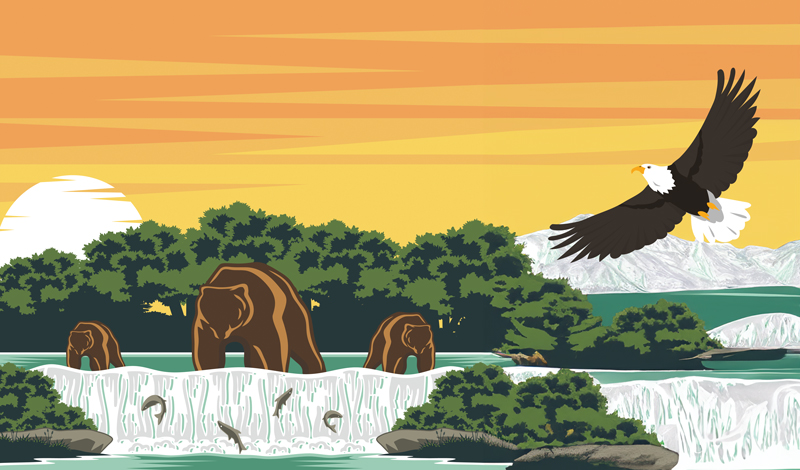In late May 1983, Ikeda Sensei traveled to America for his 12th visit, this time to the country’s largest and northernmost state, Alaska. Sensei arrived in Anchorage on May 28 for a brief stay in the state coined “The Last Frontier,” before departing to Europe. Living Buddhism chronicles his visit through the recollections of the members who were present.
Spring had come early for Alaska—it was May 1983, and already there were buds on trees. Ikeda Sensei would later recall that the scent of the earth absent for half-a-year had returned, the climate pleasant as though resembling autumn in Japan.[1]
Earlier that year, on January 26, the SGI president had just issued his first of 40 annual peace proposals exploring the interrelation between core Buddhist concepts and the diverse challenges global society faced. And two weeks before his visit, the Soka Gakkai International was registered as a non-governmental organization in consultative status with the U.N. Economic and Social Council.
For the members of Alaska, who were joined by representatives from the Pacific Northwest and SGI Canada, it was a rare visit for a state with just six districts and a little more than 150 members. Sensei would later recall that, perhaps because of the harsh natural conditions, everyone he encountered here was down-to-earth, genuine and warmhearted: “These are real human beings!” In his essay, “Alaska—Poem of the Far North,” Sensei shared: “Viewed in terms of people’s humanity, areas referred to as being on the ‘edge of civilization’ may actually be the most highly developed regions, while those regions that pride themselves on being ‘developed’ are the ones that are really on the ‘outer edge of civilization.’”[2]
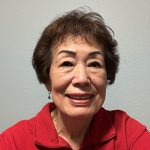
Shigeko Hunziker (Anchorage, Alaska): My husband was in the military so we moved a lot. In 1974, he was transferred to Fairbanks, Alaska. He was against my Buddhist practice for the first seven years after I joined the SGI, but by the time we moved to Alaska, he was already practicing and taking on leadership.
When we moved to Fairbanks, there was nobody practicing there except a couple of Japanese women. We started holding meetings and by 1980, we had almost 30 members practicing in Fairbanks.
In the winter, you may only see three hours of sunlight throughout the day. The temperature goes down to minus 60 degrees. But that’s when the most people come out to meetings. They leave their cars running because if you turn the engine off, it won’t start again.
When Sensei came, the weather was mild, and there was quite a bit of sunlight.
I found out about the visit just three days before, and my husband and I drove to Anchorage with our three kids, about a six-hour drive.
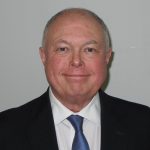
Tony Meers (Toronto, Canada): I was invited to join the delegation that greeted Sensei at the airport. He shook each of our hands. He thanked each person with his whole heart and looking into his eyes, I felt enveloped by his vast life condition. Sensei makes every person feel like they matter infinitely.
In one sense, Alaska was a stopover on his way to Europe, but it was so much more. In retrospect I can understand the deeper significance of it.
In volume 30 of The New Human Revolution, Sensei writes in detail of what was happening with the priesthood at the time.[3] Through everything, even without knowing the full context of what was going on, there was a very powerful sense of being together with our mentor.
On May 28, Sensei attended a small dinner meeting with representatives from Alaska, the SGI-USA and SGI Canada. There, the youth of Alaska presented him with two mementos and their determination to further advance kosen-rufu. At this meeting, Sensei called Alaska “the land of the 21st century.”[4]
The First North America General Meeting Held
On May 29, the First North America General Meeting was held at the Sheraton Anchorage Hotel. Following dinner, the local members performed a dance of the indigenous people of the region.
In the first presentation, they wore the traditional kaspuk, the male dancers holding eagle feathers while celebrating one of the customs of daily life: drying seal meat. Next, a mother’s voice sang a traditional lullaby: “Sleep my child, don’t fear the dark, nothing is there, nothing there can harm you…” Next in “I Am the Bird,” the dancers embodied the spirits of birds and animals, enacting our connection to the great web of life.
In an essay, Sensei recalled the beauty of these performances and shared that the rest of the world had much to learn from the brave example of the indigenous peoples of Alaska.
These performances were followed by a song and dance from the members from Canada and the Pacific Northwest women’s chorus. Jazz musician and SGI member Ernestine Anderson sang “Over the Rainbow” and “My Way.” The performances concluded with an original dance set to the song “Mother,” performed by the women’s division.
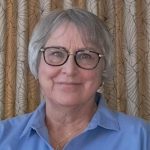
Cathy McDougall (Eugene, Oregon): When I think back to that time, it seemed like everything was such a struggle.
I was part of the women’s division dance group, but I was not a dancer! Every weekend toward Sensei’s visit, I would travel from Portland to Seattle for rehearsal.
At the time, my mother was ill and we had our dining room set up like a hospital room. The night before our last rehearsal weekend, several of the women spent the night so we could drive up to Seattle together. We practiced our dance to the song “Mother” in front of my mom and then we read the translation of the song to her.
The next day, while I was at rehearsal, she passed away with my sister at her side. It meant so much to me that she saw us dancing and she heard the song the night before she passed.
I was dealing with many emotions when I went to Anchorage the following weekend. I felt overwhelmed, but when we saw Sensei, I felt his warmth and I was able to relax.
During dinner, Sensei came to each table. He said he hoped we were having a good time and enjoyed our meal. I remember being in awe of his attentiveness to ensure that we were all OK.
When it was time for our performance, my part in the dance consisted of me coming out of the center at the end and smiling. I was afraid I would burst into tears, but actually, I felt so happy to be there and found myself genuinely smiling. All of the angst and grief lifted and changed.
My nature then was to dwell on my sadness, to dwell on what I had lost with my mother passing. But because of this encounter with Sensei, I recognized that my mother’s life was in perfect rhythm with Sensei’s, and it became a departure point for me.
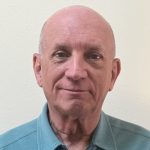
Michael Golden (Mission Viejo, California): I had completed a bachelor’s and master’s degree in music and was working with a jazz band in Seattle. My career was on an upward trajectory. Then, in 1982, the economy collapsed, and I had student debts to pay off. I had to take any kind of job I could find.
When Sensei came to Alaska in 1983, I was feeling discouraged. I had been practicing for 10 years, doing my best in SGI activities and working hard to get my music career going, but I felt like I was going backward.
Because I was a musician, I was asked to help organize the performances for the general meeting. We put together a small group of musicians from Seattle and Alaska to play background music during dinner. I began to notice that Sensei would interrupt his conversations and lead a round of applause after every song, which is unusual for dinner music. It seemed to me he was paying attention.
When it came time for his encouragement, he said: “Everyone please relax. I’d like to talk with you as if we’re in our living room.” Then he asked the piano player, me, to come up to the stage.
He shook my hand and looked me in the eye and said: “I want to thank you for your performance tonight. It was magnificent. It’s engraved in my memory forever.” Then, he took off his flower lei and put it on me.
I had no illusions that I had done anything musically to earn that kind of response. But in that instant, I felt that he knew my struggle—how painful it was for me that I couldn’t directly pursue doing music. And the fact that he made that kind of effort to encourage me had a profound impact on me.
I determined at that meeting that I was going to fulfill the greatest mission that I possibly could in music. It became a key turning point for my life.
Although I made that determination, nothing happened immediately. It took me three years to pay off my student debts, and frankly, there were many nights of tears in front of the Gohonzon because it appeared nothing was moving. But, I never stopped making that determined prayer and doing my best in SGI activities.
Eventually, I went back to school to get my doctorate with that same prayer to fulfill my mission. Every class I took and each college job I got after were like training manuals for what I had to do to build a global music program at Soka University of America, where I am now a professor of music in the creative arts and humanities programs.
After the cultural performances, Sensei spoke about how the rapid progress of science and technology has afforded us a richness and a level of convenience not previously known but at the same time has led to a rise in mental illnesses. The development of nuclear weapons, also born of scientific progress, has led us to question our very survival. Ultimately, he said the answer to this predicament laid in the human, or inner-directed revolution of each person:
Whether humanity moves toward happiness or destruction is solely in the hands of human beings. Ultimately, it hinges on whether the leaders of each nation undertake their own human revolution, or inner transformation. What makes such human revolution possible is the higher teaching of Buddhism or, more precisely, the Buddhism of Nichiren Daishonin.
Nichiren states, “[Chanting] Nam-myoho-renge-kyo is the greatest of all joys” (The Record of the Orally Transmitted Teachings, p. 211). In other words, by chanting Nam-myoho-renge-kyo, you can bring forth the life state of Buddhahood, which is the greatest joy. Even if your life is dominated by problems and difficulties, please be convinced that if you believe in the Gohonzon and chant Nam-myoho-renge-kyo, your life will overflow with joy. A strong life force will emerge from within so that you can challenge and overcome any suffering.
It is true that even though you practice faith, you may suffer from many anxieties and problems both in society and within the SGI organization. But Buddhism expounds the principle of “earthly desires are enlightenment.”
Here, “earthly desires” include all your sufferings and worries, and point to the inherent destiny of human beings. But with the power of faith in the Mystic Law, you can transform your earthly desires into sources of enlightenment, the supreme condition of happiness. In other words, you can use your anguish and suffering as fuel for polishing your character and establishing indestructible happiness. …
I have heard that Alaska means “the great land.” Therefore, I hope you will widen the indestructible road of peace and happiness in this great state, prove the greatness of Nichiren Buddhism, and don the crown of true happiness. I pray sincerely for the glory of SGI-USA and SGI Canada, and for the happiness of my friends in Alaska.[5]
May 30: Portage Glacier
The following day, the members accompanied Sensei on a drive to Portage Glacier, about 90 minutes from Anchorage. He recalled the air being heavy with a misty drizzle but not heavy enough to require umbrellas: “In fact, I was told, the glacier is more beautiful on a cloudy day. Its color, known as Glacier Blue, had a mysterious iridescence.”[6] After taking a commemorative photo together, the members enjoyed lunch with Sensei at the Alyeska Ski Lodge.
Cathy McDougall: Most of us were on the bus to Portage Glacier, and we met Sensei there. It was a small group of us in Alaska so I felt that we were truly there on behalf of the members. I remember really wanting to soak up the warmth I felt from Sensei and share it with the members back at home.
Because of the experience with my mother and the anxiousness I felt at the time, it was really a turning point for me to go back to the prime point of faith. Being with Sensei was like an oasis in the desert at that time. I left Alaska with a determination to become absolutely happy.
The pain, the joy, the suffering, the benefit—everything has supported my practice so that I can continue to do my human revolution. I hope to continue to do my human revolution for another 20 years!
I’m determined to chant daimoku and show great actual proof. I want the result of that to be the growth of the youth division. All of our Many Treasures Group members have that same kind of determination, that no matter what it takes, we’re going to do our best to see that the youth division develops here in Oregon.
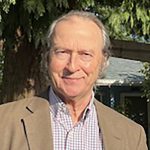
Tom Eddy (Tacoma, Washington): I was a young men’s leader and supported the movement as a Soka Group member. One thing I vividly remember was staying up late every night in the control center. In those days we had paper tickets for our flights, so as Soka Group members, our job was to make sure we had all of the return flight tickets so that everyone could get home. We were counting over and over and everyone was falling asleep. I told myself, We gotta get through this! Finally, we got the count right, and we had a ticket for each person. What a relief!
We were not often in the presence of Sensei, but we would hear reports about how he was encouraging the members. He used every spare moment to encourage them without wasting any time. I felt this must be a glimpse into what it must be like to work in the world of Buddhahood together with a great leader. I made a determination to work harder to support Sensei’s vision for kosen-rufu.
Because I’ve encountered this practice, I’ve lived a happy life. Of course, there are still challenges, but I have confidence that I can solve anything as long as I stick with my Buddhist practice and my mentor’s guidance.
I’m going to be 72 in November, and I am praying that the youth emerge to lead kosen-rufu in our region. I’m also supporting the Many Treasures Group members, and I want to see us extend our lives, live more joyfully so that we can support the youth!
By 2030, I want to help establish a solid SGI community that is making great differences in people’s lives. I’m also determined to establish the happiest family where everyone is fulfilled and thriving together!
In the evening, Sensei’s trip to Alaska concluded with a meeting to mark the 22nd anniversary of kosen-rufu in Alaska. He prefaced his talk by noting that it was Memorial Day in the U.S. and conveyed his sincere condolences for those who had died in the First and Second World Wars. He then began speaking about the meaning of leadership.
To start, I want to say that I hope all our leaders have strong faith and kind hearts. Many factors have enabled the SGI to achieve such miraculous progress over the years, the power of Nichiren Buddhism naturally being among them. But one of the most vital is the pure and strong faith of the leaders. Without seeking recognition or reward, they fought with all their strength to achieve kosen-rufu. …
As an organization grows, however, people’s faith and practice tend to become habitual and their spirit gradually loses its original purity. Leaders’ attitudes also tend to change, and they can become preoccupied with the desire for social recognition or personal gain. This is a natural human tendency. We who aim for kosen-rufu and are leaders of faith should never succumb to such pitfalls, always reminding ourselves to carry out a determined practice. …
The organization is indispensable as a means to promote kosen-rufu. It would be almost impossible to practice Buddhism correctly without the organization’s support and guidance. Mind you, however, we place the highest priority on faith and human beings, not on some idea of organizational supremacy.
Your responsibilities as a leader are serious indeed, but the Gohonzon observes your every effort. Having confidence in that is, in a deep sense, faith itself. While taking pride in your mission and responsibilities, it’s also important to listen to your members’ opinions so that you can achieve your goals and run your respective organizations smoothly. Moreover, your capacity as an individual to embrace the members, the power to persevere and the confidence to lead people—these are all vital attributes of leaders for kosen-rufu.
No less important, however, is leaders’ attitude toward their role as a member of society. They should be careful to live correctly and with sound judgment in society; in this respect they should not behave in any way that will be criticized by the members. Leaders must correctly carry out the principle of faith manifesting itself in daily life so that they can win trust and respect wherever they go.[7]
Shigeko Hunziker: Sensei spoke about how leaders have to be sincere. He also said that the Gohonzon is absolute and asked us to never stop chanting. I have kept those words deep in my heart, and it has been a source of encouragement through many struggles I’ve faced.
I was able to shake his hand at the hotel, and he said: “Do your best. I entrust Alaska to you.” I just remember saying, “Yes!”
That encounter with Sensei always comes back to me. Alaska is very secluded and Sensei once said introducing one person to Buddhism in Alaska is like introducing 100 people somewhere else. You have to have the stand-alone spirit.
I have to do it. My determination is that in 2030, we have the future division and youth division lead Alaska!
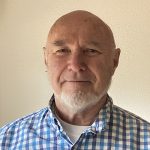
Mike Stone (Bellingham, Washington): I was a region young men’s leader in Washington in 1983. For the visit, I was asked to support the motor pool movement as a driver of the car behind Sensei’s car. I didn’t attend any of the meetings in Alaska, but I witnessed Sensei meeting with Walter Hickel, former Governor of Alaska and Secretary of the Interior under President Nixon, right outside of a big hotel that Mr. Hickel owned.
Mr. Hickel was on the curb and Sensei came up and shook his hand. As they started talking, Mr. Hickel’s expression and whole demeanor completely changed.
It was really amazing watching that transformation through the windshield of my car. I remember that deeply—how profound an impact Sensei had on a person when he interacted with them.
I am so fortunate to live in a community with lots of young people. In 2020, I made a determination to share Buddhism with many of them. I go out and meet people every day—at the mall or beach or at the park, and people are struggling with anxiety, anger, mistrust and fear.
I share Buddhism with them because I know it can unite people and calm their hearts. I grew up during the Cold War and, at 12, I read a book called Hiroshima that shook me to the core. The guy next door was building a nuclear bomb shelter in his backyard. It was scary stuff for a little kid. Then I went to Vietnam and when I came back, I was introduced to Nichiren Buddhism.
We have such an incredible practice. There’s nothing like it on Earth. Sensei said that this decade will determine the future of humanity. I really believe that we are part of the shift in the basic structure of humanity, so that it becomes more humanistic and human beings are valued.
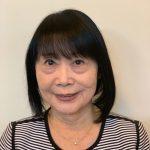
Kazue Zaitsu (Manhattan Beach, California): My husband and I, together with our three kids moved to Seattle in 1980. I had the opportunity to support Sensei’s food movement in Alaska. We would prepare three meals a day for Sensei.
When Sensei was leaving Alaska, we went to see him off. He said to me, “Thank you, please stay healthy and do your best!” and shook my hand. His hand was so warm.
I remember thinking, I hope he stays healthy. He had a long stay in Europe following his departure from Alaska. I also made a determination to do my very best.
Sensei said that Alaska was the land of the 21st century. Alaska is cold and pretty secluded. Bears often come out. But Sensei thought of the sincere members of Alaska in this way and entrusted them with this mission.
Sensei absorbed the vision of his mentor, second Soka Gakkai President Josei Toda, completely. He absorbed it, prayed about it and acted on it, and created the foundation of kosen-rufu consisting of many capable individuals. Sensei did this in order to respond to his mentor. Now I feel it is time for each of us to stand up, aiming for 2030 to create a youthful Soka Gakkai worldwide.
Michael Golden: I believe Sensei appeared in this world to accomplish kosen-rufu—to fulfill the will of Nichiren Daishonin. On one SGI training course in Japan, we had dinner with one of the men’s leaders there. When I asked him about his personal experience with Sensei, he said, “I’ve never met him, but when I fight to do shakubuku and encourage the members, I’m together with him like this.” And he put his fists together. Many people will never have the opportunity to meet with Sensei personally, but we are connected to our mentor when we are fighting for kosen-rufu and the happiness of others.
Ten years ago, I was invited to join a research institute hosted by the Min-On Concert Association, investigating the potential of music in peacebuilding, another opportunity to respond to Sensei’s encouragement and prove our mentor’s greatness to the world in my field.
Tony Meers: By reading The Human Revolution and The New Human Revolution and Sensei’s lectures, I believe we can connect with our mentor equally. When we exert ourselves and strive to embrace others based on what we’ve learned from and experienced from our mentor, then we’re entering into the same zone. Caring for others is what causes our Buddha nature to arise and for our ego to dissolve.
In 2000, I was appointed as the SGI Canada General Director. Sensei’s care for each person gave me confidence to achieve our mission in Canada. In the last several years, the Canadian organization has grown to a membership of 10,000. Toward 2030, with a new general director appointed in SGI Canada, we are on the path of growing our membership to 20,000.
Seventeen years after his visit, in May 2000, Sensei was honored as a Friend of the Library by the Z. J. Loussac Library of Anchorage for his contributions to peace and education. In November of the same year, he received a certificate of commendation from the University of Alaska, Fairbanks (UAF). And in February 2002, the Gandhi, King, Ikeda: A Legacy of Building Peace exhibit was held at the University of Alaska, Anchorage. While May 1983 was the only time Sensei visited Alaska, he left an indelible mark on the hearts and minds of the members of Alaska, the Pacific Northwest and Canada to advance kosen-rufu steadily, forever with the conviction that winter never fails to turn into spring.
From the May 2024 Living Buddhism
References
- Translated from the August 1, 2004, Seikyo Shimbun. ↩︎
- Ibid. ↩︎
- Ibid. ↩︎
- On November 28, 1990, the Nichiren Shoshu priesthood excommunicated Ikeda Sensei and the Soka Gakkai’s 10 million members in an attempt to seize control of the organization and its resources. In the years leading up to this, Nichiren Shoshu began emphasizing the superiority of the priesthood over the laity. The majority of members chose to continue practicing with the SGI. The SGI’s departure from the authoritarian priesthood allowed Nichiren Buddhism to blossom as a world religion, expanding its membership from 115 to 192 countries. ↩︎
- Translated from Amerika no tomo ni eiko are! (To My Honorable Friends in America!), pp. 173–75. ↩︎
- Translated from the August 1, 2004, Seikyo Shimbun. ↩︎
- Translated from Amerika no tomo ni eiko are! (To My Honorable Friends in America!), pp. 176–78. ↩︎
You are reading {{ meterCount }} of {{ meterMax }} free premium articles

